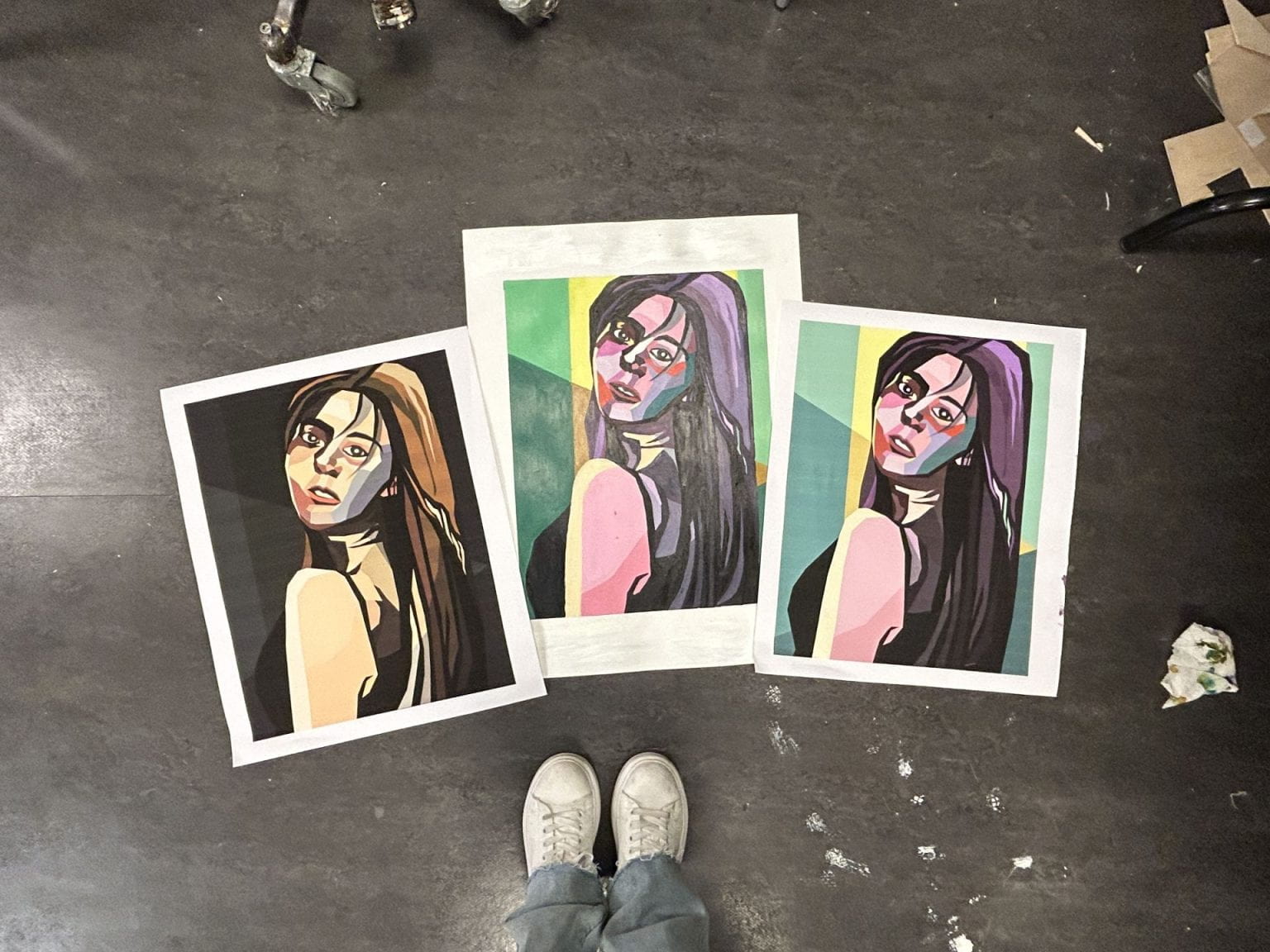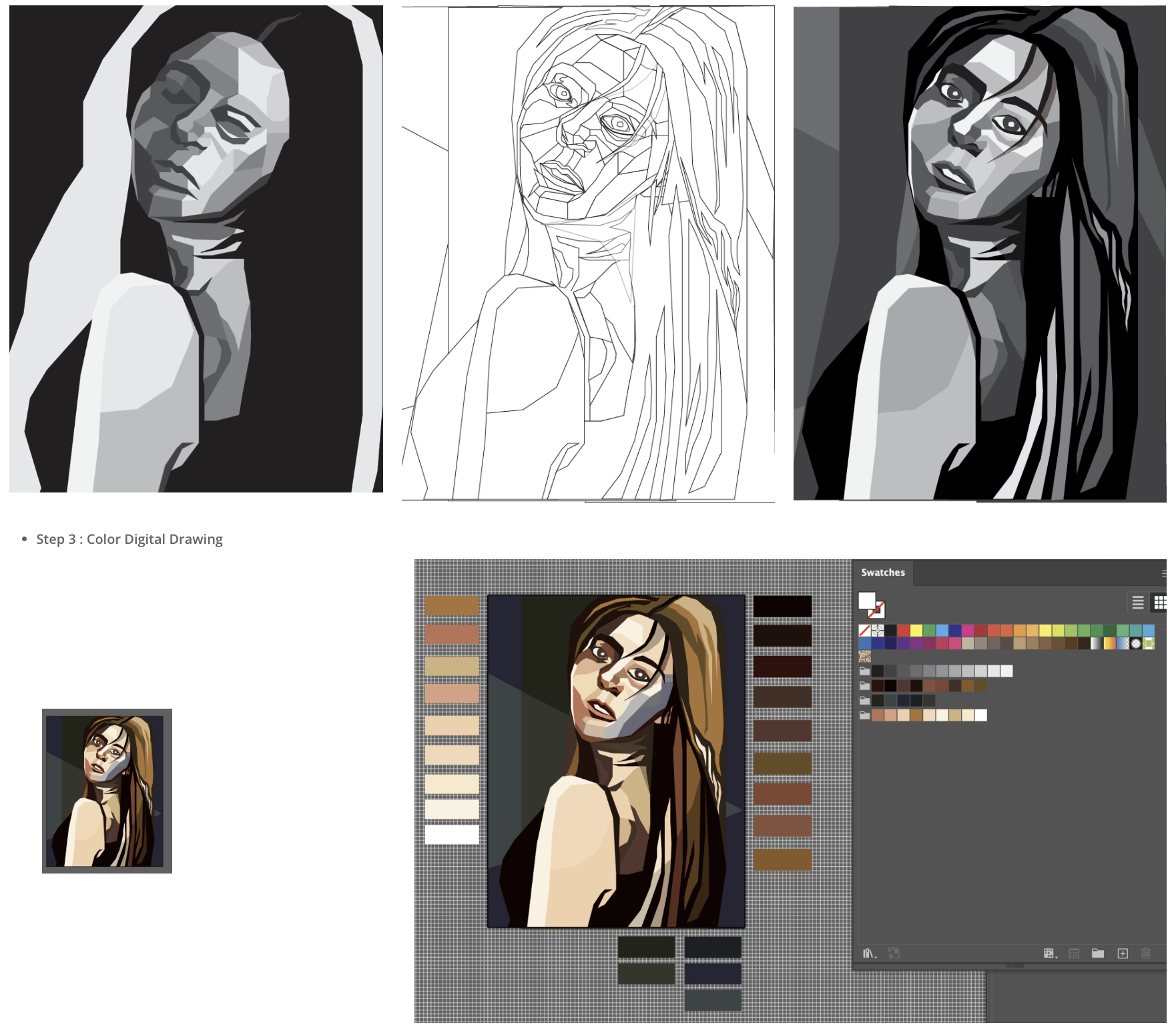
This project explores the transformation of a self-portrait through multiple mediums—from traditional drawing to digital rendering and finally back to a physical painting. The process became an exploration of how identity, emotion, and perception can shift across tools, materials, and visual languages.

The journey began with a charcoal self-portrait, where I studied light, shadow, and facial structure through close observation. This step helped me understand how form and tone define emotion. The second stage moved into Adobe Illustrator, where I translated the drawing into simplified color blocks. Starting in grayscale and then introducing color, I learned how digital abstraction can reveal new ways of understanding light and volume.
In the final stage, I created a hand-painted acrylic portrait inspired by the color theory of a chosen artist. The combination of digital analysis and manual painting allowed me to connect conceptual thinking with tactile expression—turning analytical study into personal emotion.
Throughout this month-long project, I encountered many challenges. Moving from grayscale to color was especially difficult: learning how subtle shifts in hue and saturation affect light and depth required continuous practice and experimentation. Acrylic paints added another layer of complexity—their fast-drying nature forced me to adapt my blending techniques and work rhythm.
Despite the technical challenges, this project reshaped my understanding of color as language. I learned how to construct mood, personality, and atmosphere through color harmony and contrast. The process also taught me patience and the importance of iteration—each phase building upon the last, each mistake leading to discovery.

Ultimately, Self-Portrait became more than an exercise in skill; it was a reflection on how art bridges technology and emotion. Moving between the real and digital worlds allowed me to better understand how creativity evolves through translation, turning a single image into a layered study of self-expression.